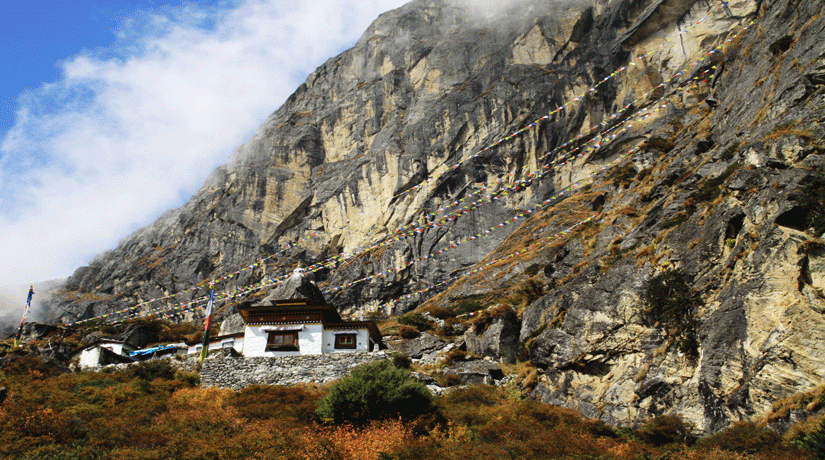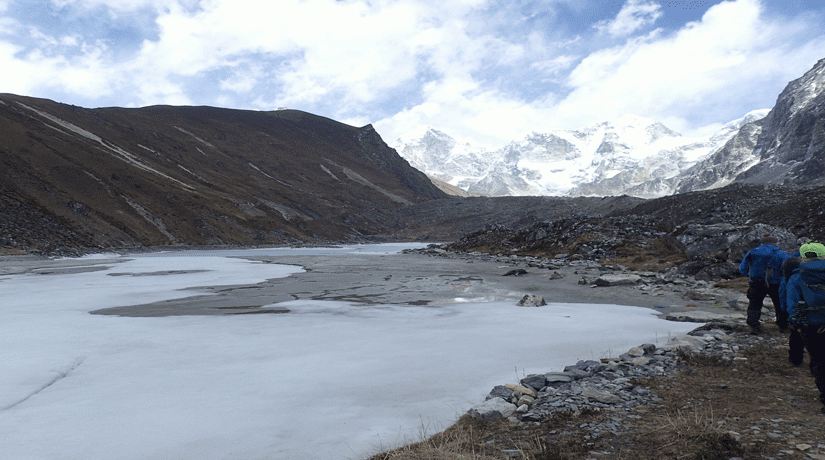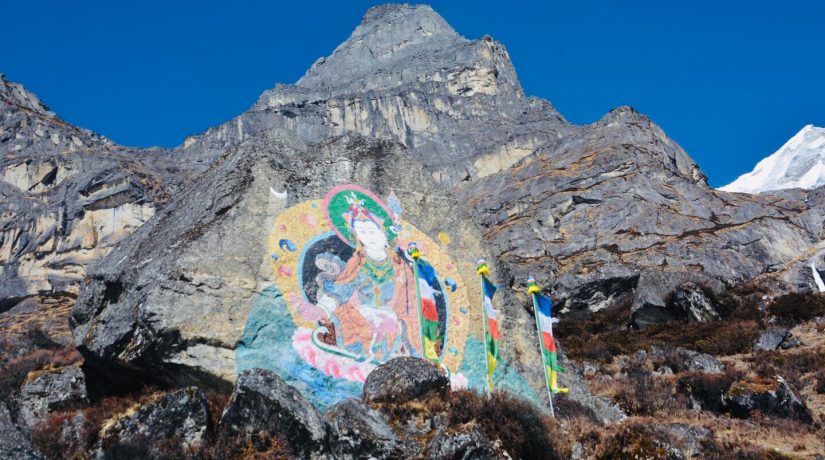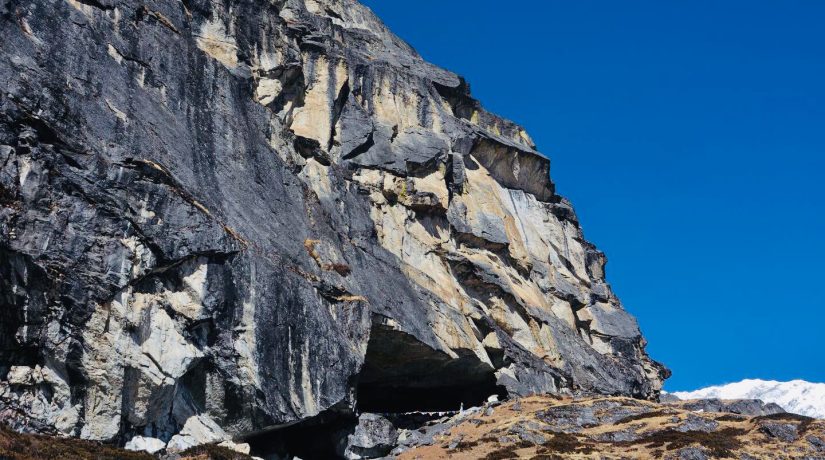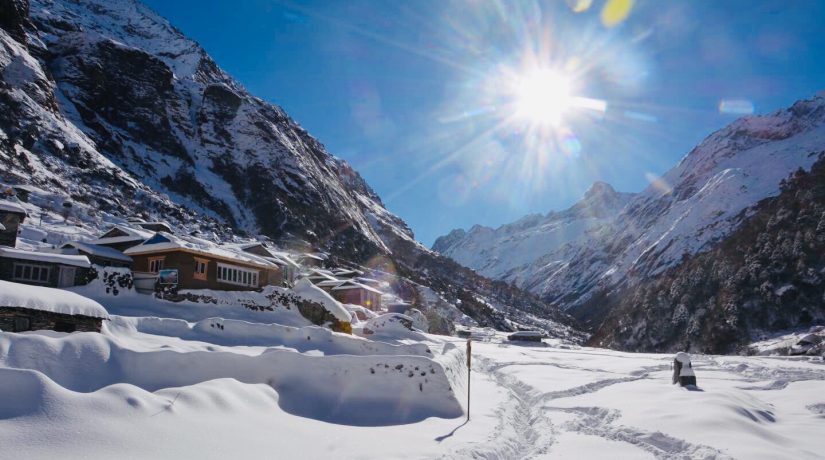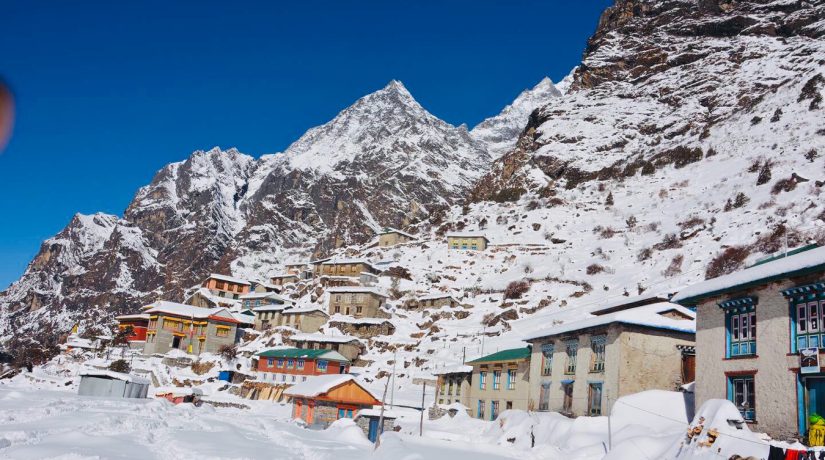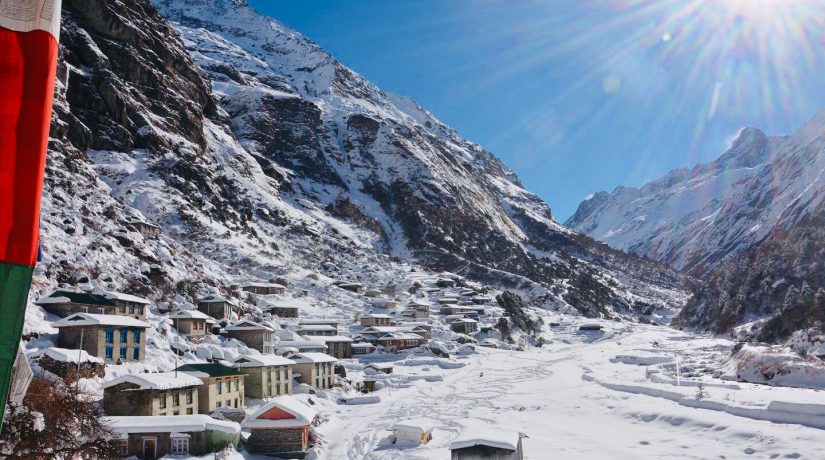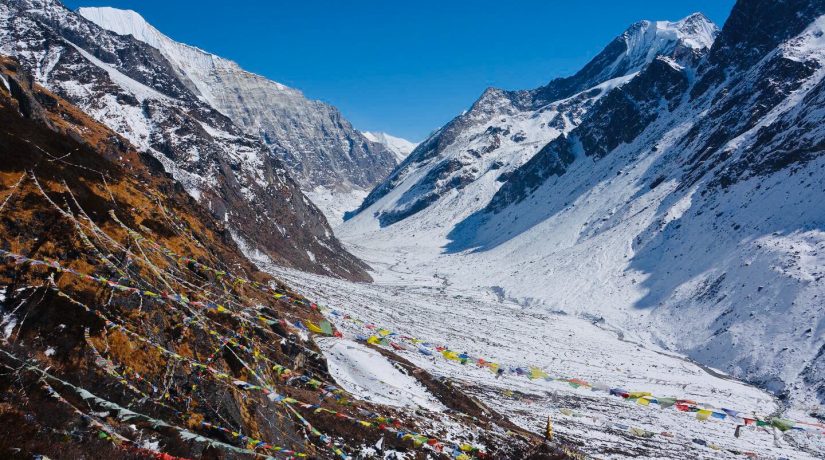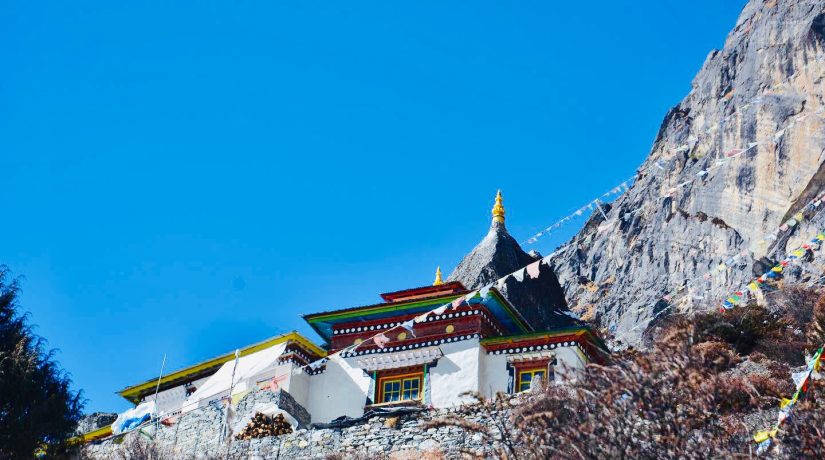Trip Facts
General trp informations2+
Moderate
Basic Teahouse
4,580 metres (15,030 ft)
Nepali and continental
Bus/Jeep
Autumn and Spring
Nestled in the lap of Gauri-shanker, a Beyul visited and blessed by Padma Sambhava. Nepal best climbers call this their home and a paradise on earth.
Rolwaling a remote mountain valley in the northeastern Nepal lies at an altitude of 5600 meters bordering the Everest region in one side and Tibet autonomous region on the other.
Rolwaling is not only rich in natural resources it has some prominent mountains, several virgin peaks and two pristine lakes Tsho Rolpa and Omitsho. Fed by the lakes the valley is crisscrossed by rivers of waters descending down from steep rocks.
Visitors to Rolwaling is welcome by tall trees, drift with hanging moss. Southern slopes covered by bamboos and fragrant rhododendrons.
- I think it's one of the strongest spiritual sensations I've ever known and also this landscape is spectacular, it's unique.
o One of the most spiritual places with sceneries. Views of Gaurishanker, very special atmosphere. We are in a snow storm and it's absolutely amazing. One can guess the mountains all of self. There is really a very special atmosphere here. I just love it
Above all Rolwaling is sacred place visited and blessed by Padma Sambhava, one of the most prominent figure of Tibetan Buddhism. Padmasambhava or Guru Rinpoche once crossed this valley and journeyed on towards Tibet.
- It was here he had meditated and attained divinity of Vajra Kilaya. Then he deposited his sacred texts in Khando-Dhakyik, hid him in this region, and went to Tibet.
- Here we say the moon. And there, there is a round form - it is the sun its name, in Tibetan, is nyi-dha rangjung.
- In the Nyingma Buddhist tradition, Guru Rinpoche has established and dedicated hidden valleys called Beyul.
- The people who tread the soil of these sacred Beyul will live 500 years. It is very clearly indicated in the book of Guru Rinpoche Pema Kathak that Rolwaling is a Beyul.
During this period, he consecrated many holy land marks and monuments. And to this day this valley is like cataract through out the valley.
Rolwaling considered one of the most major Beyuls and therefore religious significance. A Beyul is a sacred place of refuge and it is believed the whole valley is hidden or may difficult or dangerous to find.
- The Beyul are hidden lands, Guru Rinpoche established them, looking for places devoid of a peaceful life, he meditated here then left in memory special places like Tseku-Nasa, Ugyen Jisa, Ugyen Dupkhang or Tsebum. Tsebum is a place where people come for longevity. It is also where people come who want and can not get children. – A local Lama said.
You can see Guru Rinpoche's footprints, as well as a rock that has the shape of his hat. There is also a big rock that looks like a dog. It was probably a watchdog at the time of Guru Rinpoche.
These Beyul were concealed to be inaccessible, undiscovered and uninhabited. They have been or will be revealed to provide shelter during difficult unfortunate times.
- The Rolwaling is considered a Beyul because the villagers believe that the mountains here are the home of protective deities.
- The Rolwaling is holy because there are many sacred sites like the Guru Rinpoche caves. The seat of Guru Rinpoche is a big rock near Na.
In the early days thousands of traders traveling between Kathmandu in Nepal and Dingri in Tibet passed by the entrance to Rolwaling without being aware of it or not having the courage and curiosity to explore.
Although a guidebook or Neyig is available finding a Beyul is quite strenuous. These Neyigs are compiled by special visionaries known as treasure finders. The prime location for such secret and sacred hidden lands are the individual mountains behind which they lie.
- Identified by Rinpoche as a sacred place of pilgrimage to pray to the god Tanding.
The geographical location of Rolwaling that fits into the classic criteria of Beyul.
The Rolwaling Valley lies southern slope of Mount Tseringma, or Gaurishankar a sacred mountain that’s holy to both Hindus and Buddhists. The Tseringma Goddess were worshiped their vast spiritual powers while individually they grace specific mountains and lakes.
Tso Rolpa on the top of the Rolwaling largest glacial lake in the region. It was once a herding ground for yaks. But the glacial melting over the last 50 years let to the formation of lake.
Despite the high altitude, the flora and fauna of the valley are surprisingly varied. Among the 300 different species listed there are about 80 edible, medicinal plants, and other special species such as those for making incense.
The climate of Rolwaling is not as harsh as in other Himalayan valleys or on the neighboring Tibetan plateau. This is probably due to the proximity to the river Tam Koshi that brings some warmer air. It has a light monsoon, as the valley is east west oriented. In winter from November to March the weather is mostly sunny. And it’s the best time to visit Rolwaling. Between winter and monsoon mornings are generally sunny while the afternoon moisture Tamakoshi River brings fog.
Sherpas have a great regard of nature. It’s forbidden to cut the trees and hunting is prohibited in all of the valley. The valley itself was not populated until about 1870. The current inhabitants are Sherpas who migrated from Tibet and Khumbu region around 500 years ago and settled nearby caves.
Drive to Chetchet and trek to Simigaon
9 hours drive, 2 hours walk Teahouse Lunch and Dinner
Early morning from Kathmandu we drive all the way to Chetchet via Mudhe, Charikot. Afterwards cross the Tamakoshi River and trek up hill and arrive in Simigaon.
Trek to Dongang
6 Hours Teahouse Breakfast, Lunch & Dinner
From Simigaon we trek eastwards into the Rolwaling valley. First we walk through the gentle trail that goes downhill to the bank of Rolwaling River and then climb steeper all the way to
Surmuche. From Surmuche we continue up hill walk until we arrive Kyalje. Then we take a short trek down hill to Donggang.
Trek to Beding
6 Hours Teahouse Breakfast, Lunch & Dinner
From Dongang we continue our walk along the Rolwaling river through the alpine forest with the view of mount Chekigo facing us. Then as we approach the crossing of Rolwaling River we have the majestic encounter of Gaurishankar in front of us. We pass by small winter settlements of local Sherpas and arrive at our lodge in Beding.
Trek to Naa
3 Hours Teahouse Breakfast, Lunch & Dinner
From Beding the valley widens and the vegetation also differs. Waterfalls could be seen all along the trail. As we arrive in Na, we are amazed by the sight of the beautiful mountain peaks surrounding this wide-flat summer village. The name name ‘Na’ refers to holy place in local Sherpa language. Along the trail we can witness the holy sites and objects which all makes us feel deeply spiritual and at peace.
Hike to Omitso and Tsorolpa Lake
5 Hours Teahouse Breakfast, Pack Lunch, Dinner
Today we hike to the two significant lakes of Rolwaling valley. First we hike to the Omitso, which is regarded very holy. This lake is shaped as the left conch shell and it is related to the local deity Tashitsheringma. Afterwards, on our return back to Na we visit the Tsorolpa Lake, which is the largest glacial lake formed by melting of the glaciers.
Trek to Beding exploring Dukhang nd Tongsyag Phug
5 Hours Teahosue Breakfast, Lunch & Dinner
Explore Urgen Dukang and Tongsyag Phug on the way back, which is another very significant holy place. The Urgen Dukang is a place where revered Buddhist master Guru Padmasambhava had stayed for meditation. Even
nowadays, advanced practitioners come for meditation at this place.
Trek to Dongang or Surmuche
5 Hours Teahouse Breakfast, Lunch & Dinner
From Beding we trek back on the same route. We stop in Dongang for lunch and the continue down to Surmuche if everything is fine otherwise we stay in Dongang
Trek to Simigaun or Chetchet
3 hours Teahouse Breakfast, Lunch & Dinner
If we stay in Simigaun early morning after breakfast we descend to Chetchet and drive back to Kathmandu or We start our drive from Chetchet
